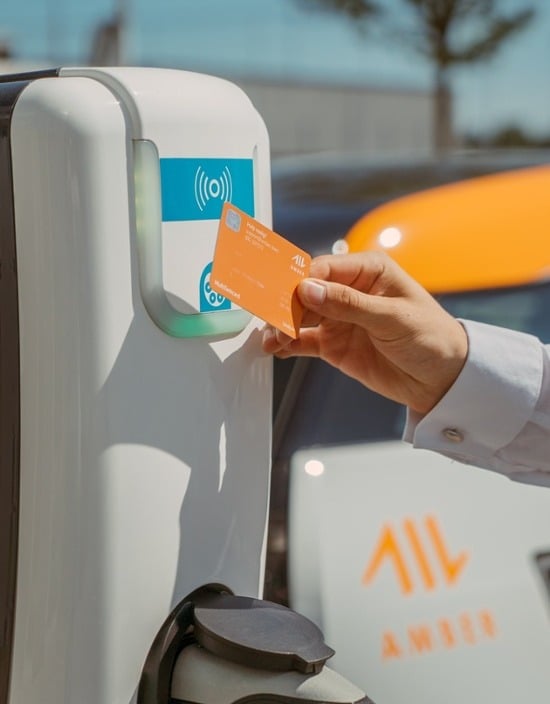“F***, the trade fair is off. How do we reach our customers now?” I heard someone say these exact words last spring. And what’s worse... the COVID crisis has exposed many more issues at a lot of companies. Not least a poor standard of digital presentation. Now the whole world is suddenly working from home and shopping online, companies are discovering they’re not really set up for that. Entire sales departments are no longer able to reach out to customers and the marketing plan has gone overboard too. If it’s still not clear to you that we’re in the middle of a digital transformation, I fear the worst for you.
It’s not too late yet, but we must act now
Don’t worry – it’s not too late to modernise your service provision for present times (even if you’re in the manufacturing business). You’re not the only one to recognise the urgency. According to research conducted by Salesforce (State of Marketing 2020), 69% of B2B marketers believe that traditional marketing restricts customer engagement. So we know what’s needed, but are we actually acting accordingly?
One way or another, it’s time to choose! And if you do choose to modernise how you service customers, be sure to choose wisely! Don’t just bolt something on – go all in.
No more ‘cut and paste’ department – claim your place at the drawing board
With all due respect to colleagues working in marketing and/or communications, we’re too frequently enticed into thinking and acting based on tools and media. In most B2B companies, I still see marketing and communications departments exclusively occupied with improving their cutting and pasting skills. That’s right: creating communication tools and media – often as commissioned by ‘the business’.
Marketing needs to claim its place at the drawing board! If there's one business section capable of identifying customer needs and translating these into good propositions, it’s marketing. In my view, marketing should be given a more strategic role. Only then can you truly respond to changes in the market and make that crucial transition within your organisation to put the customer first. You'll also avoid ‘forgetting’ to change into a more online-oriented organisation.
Start with your customers – FOR REAL
The buzzwords are flying all over the place: ‘customer-centricity’, ‘customer first’, ‘customer is king’ and plenty more I could mention. Sadly, these are usually empty promises. It’s not easy to really listen to your (potential) customers.
In fact, it takes a lot of time and effort. That’s why so many companies start talking about themselves and the products or services they sell. Often without wondering whether anyone really wants to know. This needs to change! Successful companies are those that DO add real value to their customers – by helping their customers in the best way they can. So, there is really just one credo that you MUST keep in mind: stop selling and start helping.
Make an impact with your inbound strategy
This credo brings you straight to the heart of inbound marketing. Stop selling your products and help your (potential) customers meet their needs and address their challenges. Once you understand this, the deal will take care of itself. Inbound marketing is about guiding your customers through their buyer journey. Whoever understands the customer best and helps them best during the buying process is ultimately most likely to win the customer. And the great thing is... technology today enables us to be relevant at the right time with the right information.
You may be asking yourself how to approach an inbound marketing strategy like this. Here are the three steps that I believe are absolutely essential, if you want to develop a successful strategy:
- Take your business ambitions and objectives as your starting point and choose your target market
A good marketing strategy starts with the organisation’s objectives. The objectives determine the strategy you should follow to achieve them – not the medium! It sounds logical, yet many organisations start with the medium and not the objective. Which loses them the element of choice. So choose the market or, preferably, the product-market combination that gives you the best opportunity to achieve your objectives. Choosing is key here. If you don’t choose, you will never really be relevant. If you choose everyone, you end up choosing no-one. - Identify the most important buyer persona*
Once you’ve chosen your most important product-market combination, it's time to move to the organisational level. Can you profile your ideal customer? Large, small, a certain turnover? When you’ve established this, you can also identify the make-up of a typical customer’s decision making unit (DMU). Who is actively seeking a solution to their challenges that relates to your products or services? And who will ultimately make the decision? Choose the person with the greatest impact on the buying process. This individual is your most important buyer persona and your prime focus. Once again, you need to make a choice here. Start with the most important person (often not the final decision-maker) and only reach out to others later. Focus is key. - Really get to know your buyer persona and understand their challenges
Now you know who the most important person is, you can get inside his or her head. Don’t be superficial here. Your goal must be to truly understand him or her – by understanding their objectives and challenges, as well as any pains they experience along the way. You also want to know what makes them happy: their gains. This doesn’t take years of research. Often, most of the knowledge already exists inside your organization. Start with your sales people and with customer service. They are in contact with your customers every day and can supply 80% of the information. You can validate the remaining 20% in practice. Because the proof of the pudding is in the eating, after all.
Are you there yet? No, of course not – we’re just at the beginning. But this beginning is absolutely essential. So make this your first step: choose wisely and develop a good profile of your buyer persona. I’ll discuss next steps in a later blog post and illustrate how to put an effective inbound strategy into practice.
*Box: What is a buyer persona?
A buyer persona is a semi-fictional representation of your buyers that sets out their objectives, challenges, pains and gains. A good buyer persona enables you and your colleagues to help customers on their buyer journey. For more information on how to develop a good buyer persona, please see our white paper on buyer personas.



